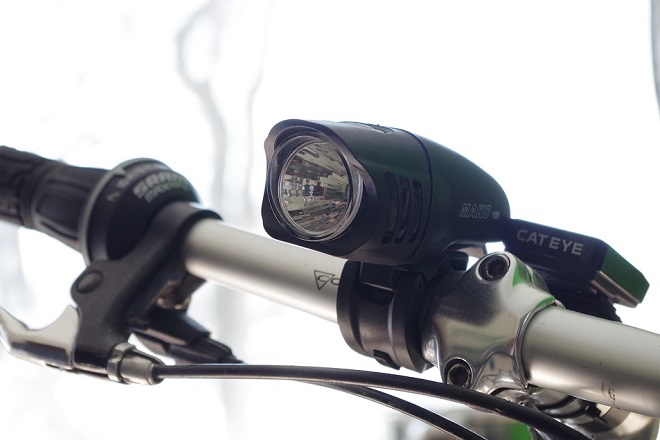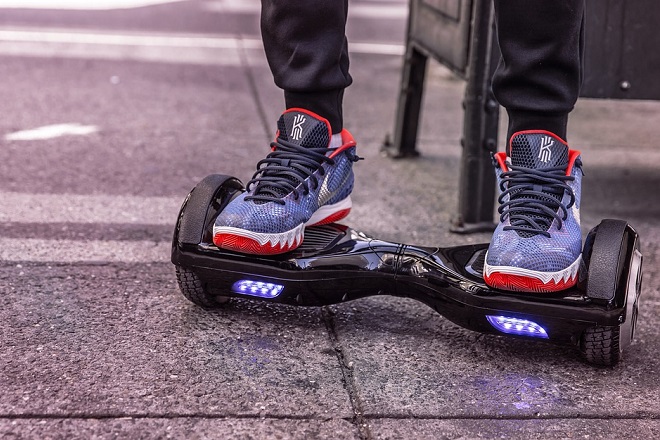There is no denying the fact that riding a mountain biker is fun but every cyclist also has at least one experience to share where they have survived a close call. When it’s a cyclist and a car on the road, the car is always going to win.
One of the major reasons is that it’s difficult for car drivers to see cyclists who don’t have a headlight and a reflector. If you are in the habit of riding a mountain bike without light, consider yourself invisible to vehicles and this is the reason, experienced cyclists always urge other cyclists to have a bike light on their bike to remain safe and to ride without fear.
If you are under the impression that you will always see the cars first and get out of their way, you are wrong. Without a bike light, one day or other, you’re going to meet a seemingly blind driver. It’s true that a light is not going to make you infallible but it is definitely going to make a huge difference to your safety when riding a mountain bike. It’s not only going to make it safe on the road but also on the trail even if you have a lot of experience.
Now that we have established the importance of having a light on your mountain bike, you must be wondering about how to choose the best light from https://www.outboundlighting.com that meets your specific requirements and is within your budget. There is a wide variety of bike lights available in the market but that doesn’t mean that you can go out and choose the first light you come across. Here is a list of some of the important parameters you should carefully consider in order to make the right choice.
Bright is Not Always Right
There is a common misconception that the more lumens you have, the better you are going to see. You can always invest in a 1500 lumen bike light but it does not mean that you’ll be able to carry the battery that is capable of powering that light to 100%. A 1500 lm light running at 50% is going to be weaker than a 1000 light running at 100%. So, take the battery capacity into account before choosing a light.
Another important thing you need to keep in mind is that the theoretical lumen output is often 30 to 40% higher than the real world lumen output of a light due to heat issues or other problems that reduce efficiency. So, don’t just go by the number of lumens mentioned in the description. Discount it by 30 to 40% in order to arrive at the real-world output when you’re choosing a light for your mountain bike.
Experts recommend at least 700 lm for trail riding as this much light allows you to ride at good speed allowing you to clearly see the trail. However, two lights are much better than a single light. It is better to carry a light with output of around 1000 lm on the handlebar and a light with output of around 700 lm on your helmet.
400 lm is the minimum output that is recommended for commuting. Keep in mind that it is necessary to have a tail light during the day to as it helps in increasing visibility for car drivers.
Beam Pattern
Once you have chosen the amount of lumens you want in your mountain bike light, the next thing you need to pay attention to is the beam pattern. In simple terms, it refers to the size and shape of the light.
With brighter light, you want a wider and even beam pattern. A bright light be more useful for you if the beam is dissipated over a wider area and at the same time, it projects out over a fair distance. The most desirable pattern is a clean pattern without any dark artefacts or hotspots.
As far as the color is concerned, it’s recommended to buy a light that offers white and slightly yellow color as it’s easy on the eyes and helps in revealing trail contours better. Lights that are pure white or bluish increase eyestrain and are not easy on the eyes.
Wired or Self-Contained
There used to be a time when all the bike lights available in the market were wired but over the past few years, more people prefer a compact package that includes the battery and light in a slick combination. Needless to say, the biggest advantage of these self-contained packages is that you don’t need to fiddle with wires or connectors.
You may also use these lights as a powerful flashlight. On the other hand, these packages also have certain disadvantages as these offer shorter runtimes and lower brightness as compared to the wired option. In most cases, you will get around 1.5 hours of light at full power with these self-contained units. Wired units offer some advantages with higher runtime but the choice depends on your particular requirements.
Light Controls
You might feel that you don’t need to pay too much attention to the light controls but these are important. This is due to the reason that some models available in the market allow you to control them remotely with Bluetooth. Similarly, some models offer adjustable brightness. So, pay attention to the light controls and extra features you want in the bike light.
Brand Reliability
In addition to the above mentioned features, you also need to pay attention to the brand reliability. There are several brands available at a variety of price points and you’ll also find a number of off-brand bike lights.
When you mount a bike light, you want it to work every time you switch it on. You do not want it to fail at a critical juncture. After all, it’s not fun when you’re going at high speed on technical terrain and the light suddenly fails. Therefore, you need to pay attention to reliability of the brand before clicking that buy button.
Conclusion
Overall, it is important for you to choose the best light for your mountain bike in order to keep your riding comfortable and safe. Riding without a bike light is never safe no matter how skilled you are at riding your mountain bike. So, pay attention to the above mentioned tips and get your hands on the right light for your mountain bike that satisfies all the above-mentioned requirements and is within your budget.




